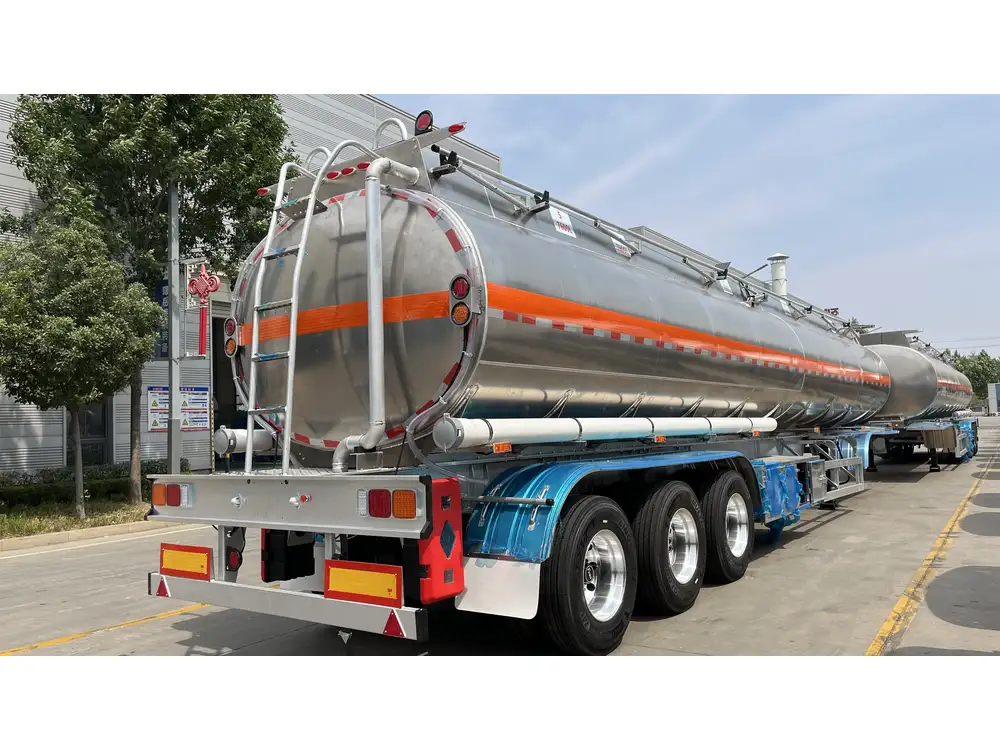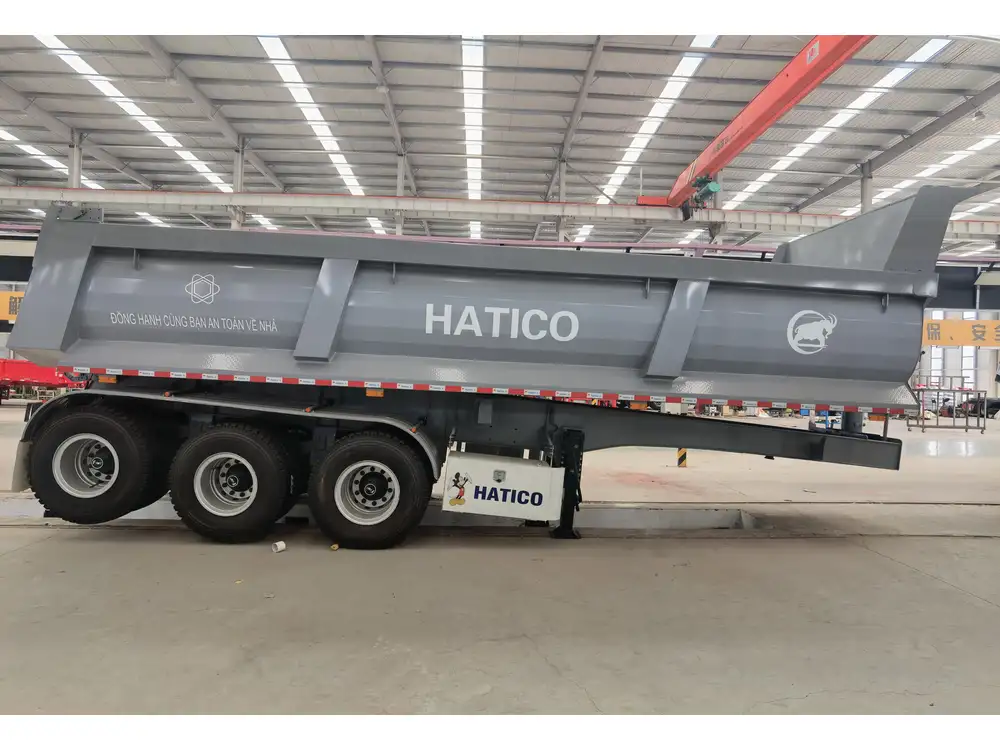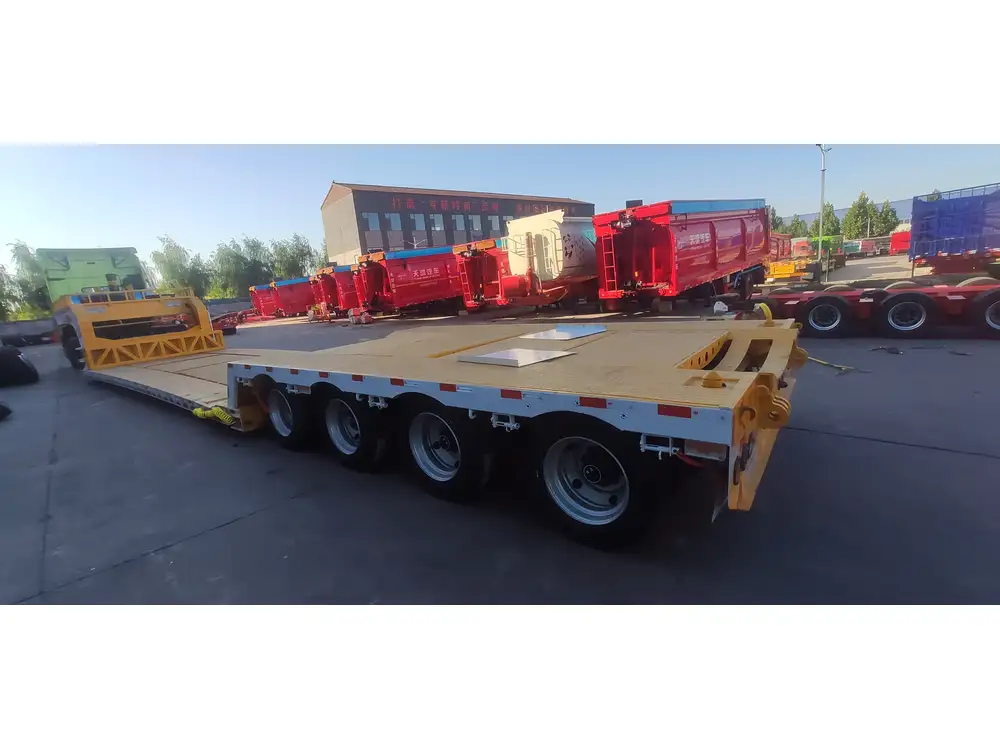When navigating the intricate landscape of semi-trailers, one of the pivotal questions that often arises pertains to their height. The height of semi-trailers not only influences loading capacities but also follows stringent regulatory standards that vary by state and country. This article delves deep into the details concerning how tall semi-trailers are, offering a comprehensive overview that assists buyers, transport professionals, and industry enthusiasts alike in grasping the essential nuances of trailer heights.
Standard Heights for Semi-Trailers
Typical Dimensions of Semi-Trailers
On average, semi-trailers stand at approximately 13.5 feet (162 inches) in height. This height is the standard in the United States and Canada, enabling them to navigate most roadways efficiently while maintaining compliance with federal and state regulations.

Variations in Heights
| Type of Semi-Trailer | Standard Height | Description |
|---|---|---|
| Van Trailers | 13.5 feet | Designed for dry goods, featuring a solid wall. |
| Flatbed Trailers | 13.5 feet | Open design, suitable for oversized cargo. |
| Reefer Trailers | 13.5 feet | Equipped with refrigeration units, used for perishable goods. |
| Lowboy Trailers | 10 to 12 feet | Specifically designed for transporting heavy machinery, with a lowered deck. |
Height Regulations by Region
United States
In the U.S., the Federal Bridge Formula governs the height of semi-trailers, establishing the maximum allowable height at 13.5 feet. However, local regulations might impose stricter limitations depending on the state. For instance:
- California has a maximum height restriction of 14 feet.
- New York and Illinois strictly adhere to the federal maximum.

Europe
In contrast, European Union regulations provide a maximum height allowance of 4 meters (approximately 13.12 feet). However, some countries allow greater heights under specific conditions, particularly for vehicles that employ adjustable suspension systems.
Factors Influencing Semi-Trailer Height
1. Design and Purpose
The intended use of a semi-trailer significantly influences its height. For instance, flatbed trailers are typically built with lower profiles to accommodate heavier cargo, while van trailers may require additional height to allow for increased cargo capacity.

2. Load Type
Semitrailers also vary in height due to the type of cargo they carry. For example, reefer trailers designed for transporting refrigerated goods are constructed to maximize interior height to ensure adequate airflow and temperature control.
3. Undercarriage Schemes
The undercarriage design—specifically the axle configuration and suspension—can affect the overall height of the trailer. Trailers utilizing a lower profile suspension system can effectively reduce their height.
The Implications of Height in Operations

Weight Regulations and Overheight Considerations
Overloading a semi-trailer, particularly in terms of height, can lead to several complications:
- Compliance Issues: Exceeding the maximum height can result in penalties, fines, and complications during inspections.
- Safety Risks: An excessively tall trailer can create a higher center of gravity, leading to increased tipping risk while turning or navigating uneven terrains.
- Route Planning Constraints: Many bridges and tunnels have strict height limitations. Knowing the height of your semi-trailer is essential for planning safe routes that avoid low-clearance areas.
Optimal Height for Different Operations
Those in the logistics and transportation sector must meticulously consider the height based on required operations:
- Intermodal Transport: For shipping containers and intermodal trailers, a standard height of 13.5 feet serves to maximize compatibility with shipping methods across rail and truck transport.
- Urban Deliveries: For urban settings characterized by smaller roads and lower bridges, opting for trailers with lower profiles may reduce barriers and improve delivery efficiency.
Evolution of Semi-Trailer Height Regulations

Historical Insights
Traditionally, semi-trailer heights evolved from the need for optimal load efficiency and streamlined transport. Increased demand for cargo space in the mid-20th century prompted manufacturers to design taller trailers, but this led to regulatory challenges, requiring governments to standardize maximum heights for safety and navigational integrity.
Future Trends
As technology advances and the industry leans towards automating freight transport, we may witness a shift in trailer design that focuses on both aerodynamics and improved load management. Emerging materials and engineering practices could result in trailers designed for even larger heights without a proportional increase in weight, potentially redefining height standards in the future.
The Importance of Accurate Measurements

Ensuring Compliance and Safety
Accurate height measurements are pivotal when selecting a semi-trailer. The process of measuring is not only about the trailer itself; one must account for factors such as:
- Attached Equipment: Any additional attachments or equipment, such as refrigeration units or special cargo handling apparatus, adds to the overall height of the vehicle.
- Load Height: Ensure that the load being carried does not exceed height limits. It’s critical to confirm that the cargo’s height, once loaded, remains within legal limits.
Tools and Techniques for Measuring
- Laser Leveling Devices: These tools provide precise height measurements, allowing for consistent and accurate assessments.
- Measurement Tapes: A standard tool, though typically less precise, can be useful for quick checks.
- Digital Height Indicators: Some modern semi-trailers incorporate digital sensors that relay real-time measurements to the driver for enhanced safety and compliance.
Practical Tips for Semi-Trailer Owners

Regular Maintenance Checks
Maintaining adherence to height regulations blends seamlessly with regular trailer upkeep. Perform inspections to ensure that:
- All gear and attachments are securely fastened and not protruding.
- Suspension systems are functioning properly and not inadvertently adjusting ride height.
Training for Drivers
All drivers should undergo extensive training regarding height regulations and load management techniques. Knowledge surrounding:
- Recognizing low-clearance signs.
- Understanding how to manage different trailer types effectively.
This fosters a culture of safety and compliance within any transportation business.
Understanding the Role of Technology
Advancements in technology have significantly contributed to the evolution of semi-trailer design:
- Telematics: Enhanced tracking and monitoring technology can provide real-time data on trailer height and load, supporting better operational decisions.
- Adjustable Suspension Systems: Some trailers now feature suspension systems that allow operators to adjust the height based on load requirements and regulatory constraints.

Conclusion
Understanding the height of semi-trailers is not merely an exercise in measurement but rather a pivotal component in ensuring compliance, maximizing efficiency, and enhancing safety in transport operations. As we dissect the layers of design, regulations, and implications concerning semi-trailer heights, it becomes clear that both current insights and future trends warrant careful consideration. For manufacturers, logistics providers, and transport professionals, mastering the details surrounding semi-trailer height can facilitate strategic decisions leading to operational success.
With growing market demands and regulatory scrutiny likely to persist, staying informed and adapting to these evolving standards will empower stakeholders across the transportation ecosystem.



